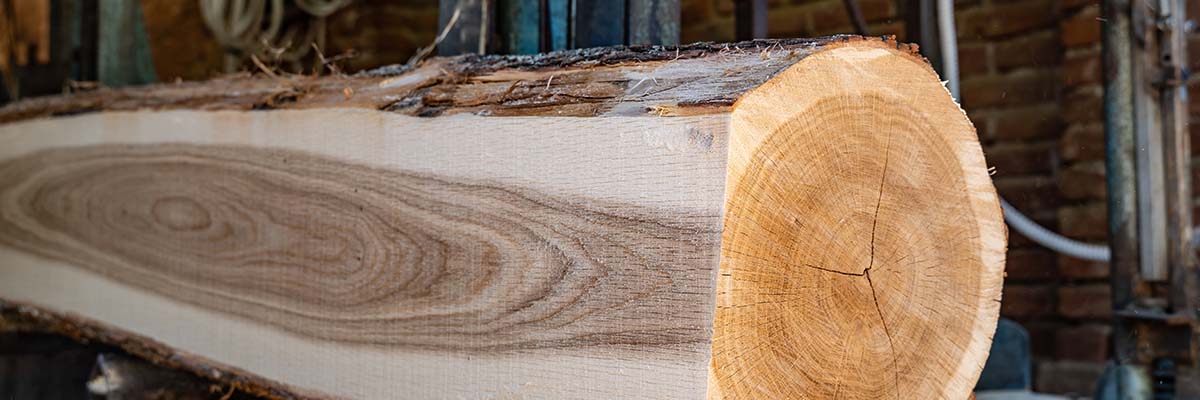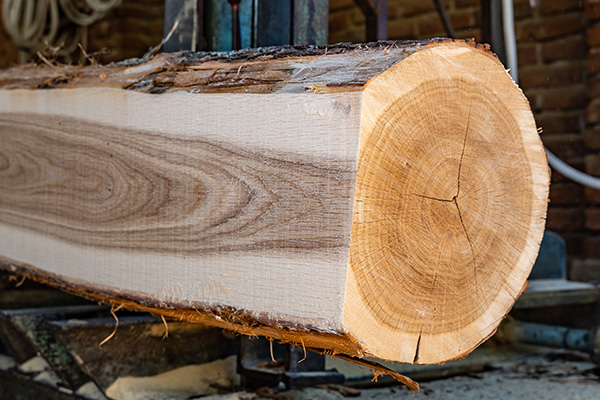

Wood Grain Makes the Difference in Your Lumber’s Appeal
You might see a beautiful old table and remark, “Ooh, this wood grain is lovely,” but knowing the details about wood grain can give you a head start on your own heirloom woodworking project. When it comes to how a piece of lumber looks, feels, and performs – it often comes down to not only the type of tree it came from, but how it’s cut, sawn, and treated. Read on to find out what wood grain really is and how it impacts projects of all types.
What is Wood Grain?
When we’re talking about wood grain, we’re focused on the wood-cell fibers and the direction or “orientation” they grew inside the tree. In fact, the way those fibers come together often is a direct result of the variety of tree they come from.
When a tree grows, its cells receive information based on the tree’s environment like drought conditions. Depending on these conditions and the way the cells are “programmed” to behave, they reproduce during the growing season. Each year, a layer of cells under the tree’s protective outer bark multiplies in number. Then they die off, darken, and become another part of the tree’s inner layers. That’s why when we cut a tree, we can count its rings and tell the story of each year’s growth.
Wood Grain vs. Texture: You'll Know It When You See It
Wood grain is visual, while wood texture comes from how it feels. At its most simple, wood texture comes down to smooth or rough. You might hear “fine grained” or “coarse grained” in woodworking, but what’s being referenced is really the texture of the wood, not wood grain.
- Smooth texture: This type of wood has small and few pores. Examples include maple and sycamore.
- Course texture: Has large cells and many pores. Examples include oak and ash wood.
- Medium texture: In between the extremes are many levels of “moderately” and “extremely” but medium texture includes most needled trees like pines as well as mahogany and walnut.
Why Think About Wood Grain for Your Next Project
If you’re picking out lumber that will be hidden within a home’s walls or under the roof, the aesthetics won’t matter much. The same goes if you plan on painting the lumber – except , in that case, you’ll want to consider whether the board has an open or closed grain. With “open-grain” hardwood, the pores are large and can require some use of wood filler to create a smooth, paintable surface. If it’s a “closed-grain” hardwood, it could be ideal for staining or treating with a clear sealant, and the wood grain pattern can be the star of the show. Learn more about hardwood vs. softwood and their uses.
Types of Wood Grain
Wood grain first happens naturally when the tree is growing. Depending on how the tree grows, straight or twisted, when cut, the grain is displayed in a variety of patterns.
- Straight: Runs in a single direction on cut wood. Frequently seen in cherry, hard maple, and cedar wood.
- Spiral: Happens when a tree grows in a twisted shape.
- Interlocked: An advanced form of spiral grain, the growth rings show misalignment due to extreme twisting.
- Irregular: A general term for grain irregularities, but often appears in sections cut from wood burls and knots or from large branches growing close to a trunk.
- Wavy: This rare pattern occurs when wood fibers grow in an undulating pattern, like ripples of water. It’s unknown what causes this grain design to grow this way. Wavy can also refer to wood grain that changes direction frequently.
How Lumber is Cut
When a tree is cut into wood planks, you'll also see different patterns that are exposed. These include four main designs:
- Plain sawn: These boards show a “cathedral” wood grain pattern which shows off the annual growth rings. This is the most common way timber is cut because there is minimal waste. With this cutting process, the log is turned to achieve the best cut for each section. But it can also lead to wood warping if the wood is not properly stored because the different parts of the log hold varying amounts of water in sections of the boards.
- Quarter sawn: A “quarter sawn” board comes from a piece of timber that’s cut into quarters. The flecks that appear show the growth rings in an almost stippled pattern on the boards. This type of cut is less likely to warp than plain sawn but comes at a slightly higher cost because of the labor involved.
- Rift sawn: When a plank is “rift sawn” it’s also cut out of a quarter section of log, but the grain pattern appears in vertical stripes, not the tight flecks of a quarter-sawn plank. Both quarter and rift-sawn flooring are typically very stable because there is minimal grain in these cuts. Rift sawn is typically more labor intensive and produces more waste, and therefore is more expensive than plain or quarter-sawn wood. This type of cut has a pleasing and more uniform appearance and is ideal for projects like tables or chairs that have their grain exposed from many sides.
- Live sawn: If timber is “live sawn” it’s cut top to bottom like peeling a carrot, but without turning the log. Each layer has its own grain characteristics with a natural feel. This method incorporates all three of the above cutting methods to create a distinct grain on the lumber. It’s ideal for situations where the wood will be the star of the show, like a beautiful hardwood floor where you really want to show off the elements of the wood or have a live edge look.
Ready for the Next Project?
Come to McCoy’s and our experts can help direct you to the perfect type of wood and wood grain for your next project. Whether you’re planning an heirloom woodworking masterpiece, or simply upgrading your hardwood floors to something that will last a lifetime, we’ve got you covered.
